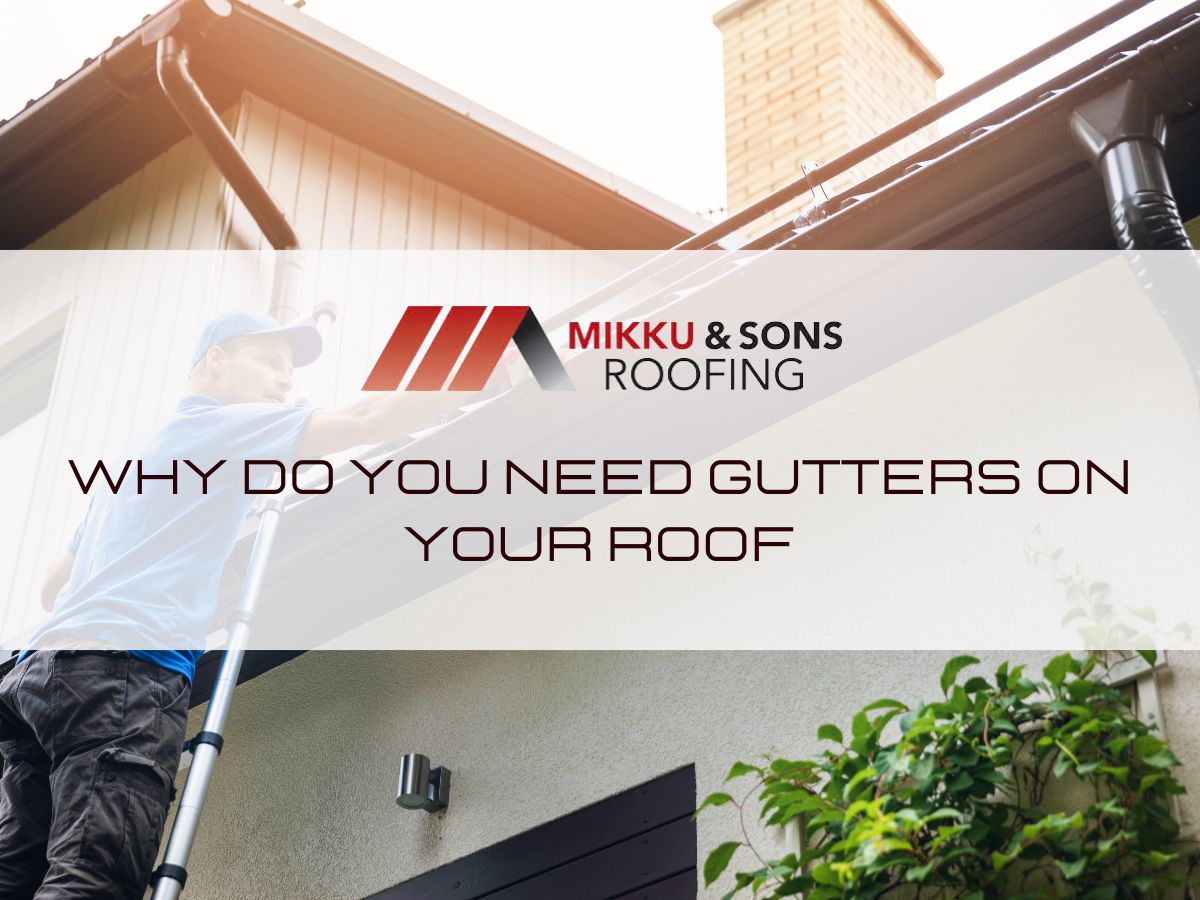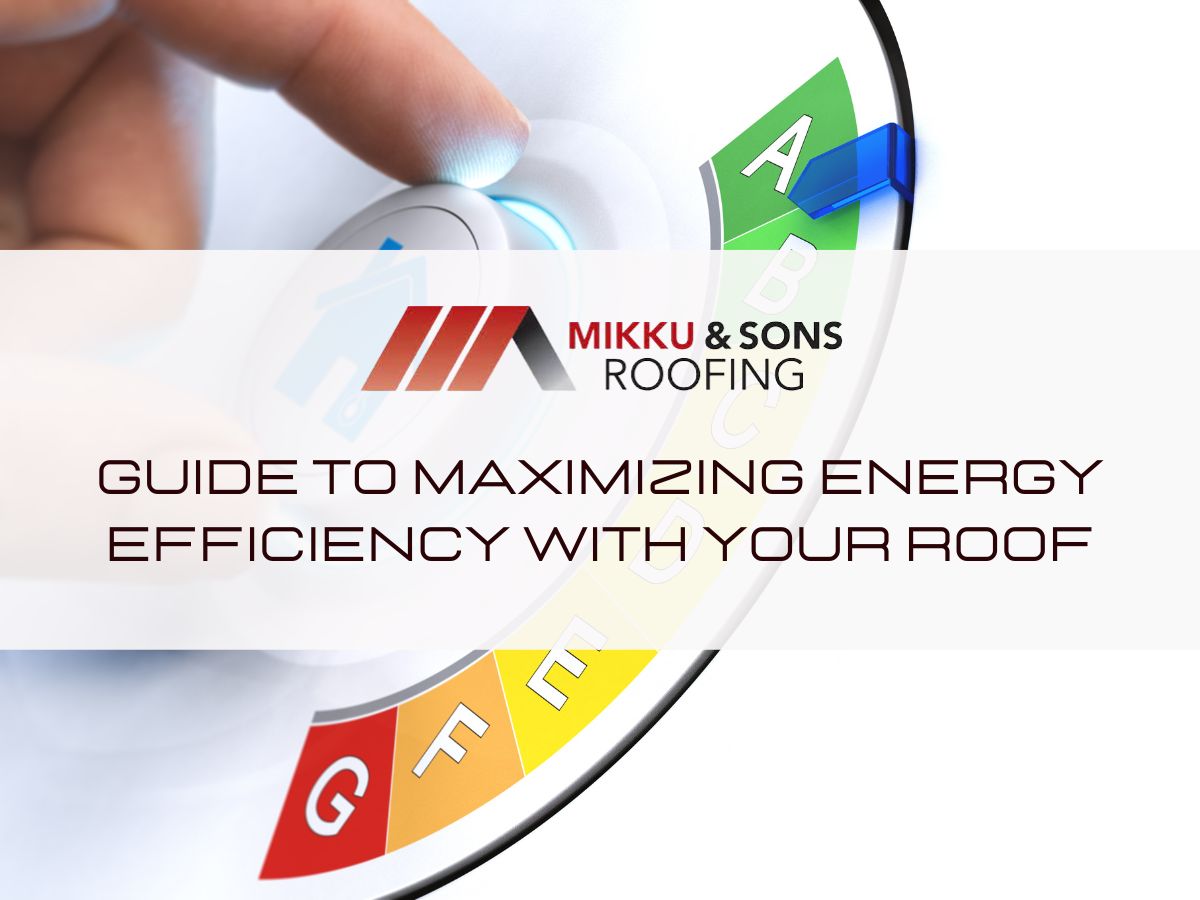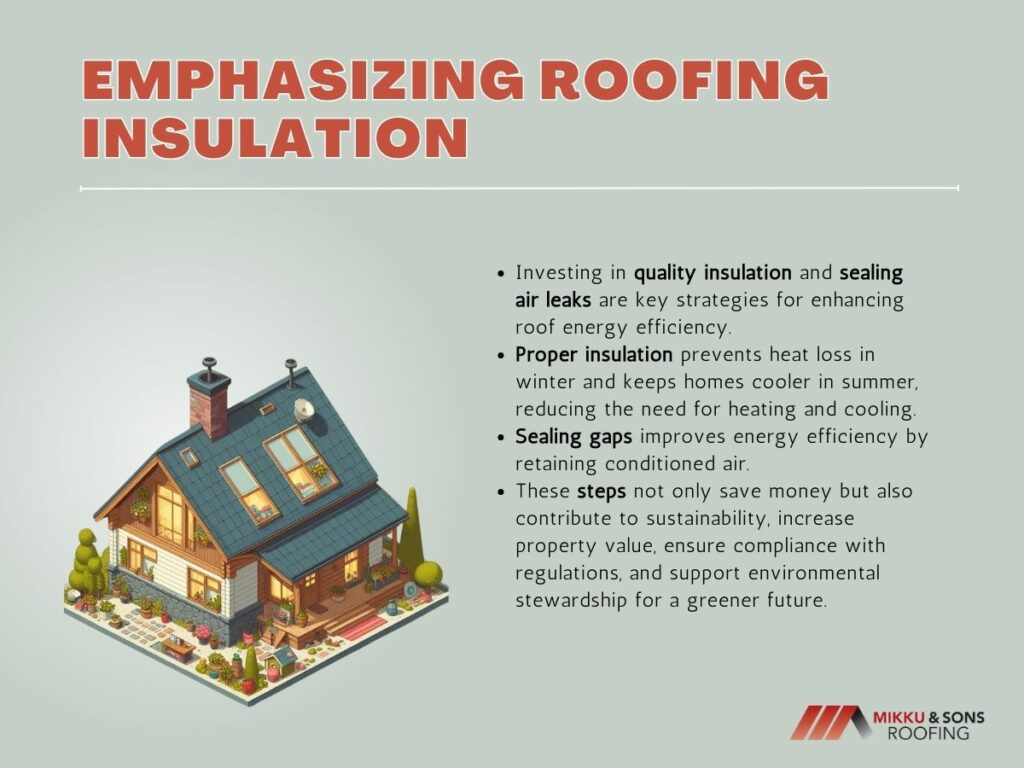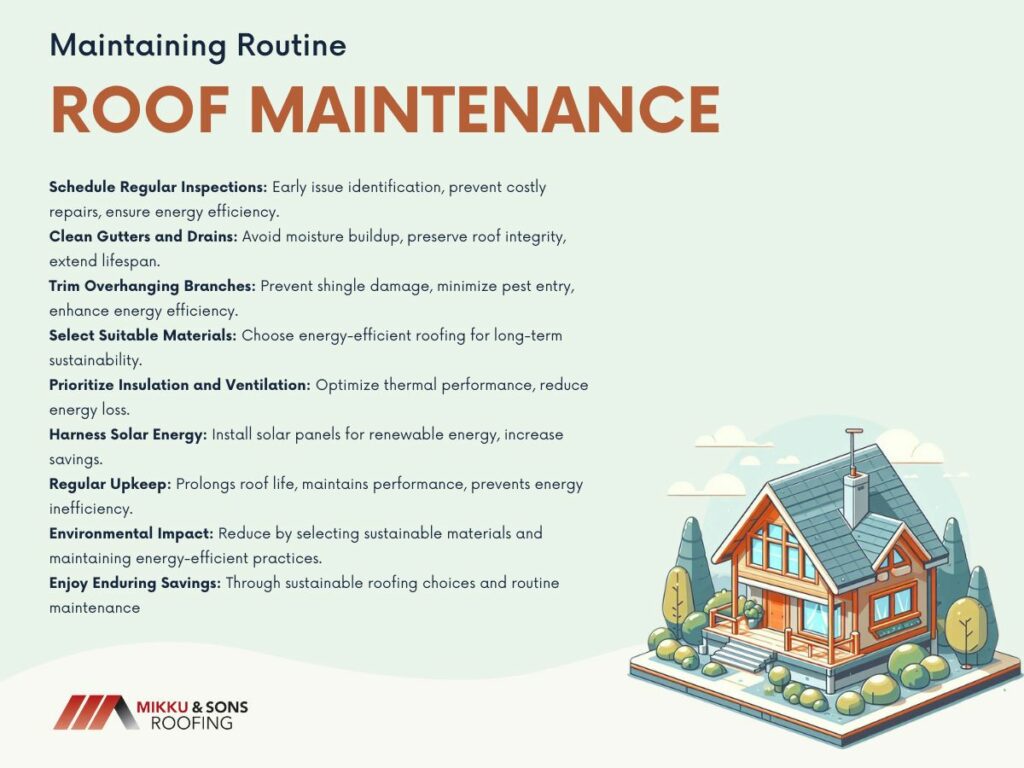

In an age where environmental consciousness is paramount, homeowners increasingly seek methods to diminish their carbon footprint while trimming energy expenses. Your roof can play a significant part in regulating the temperature inside your home and optimizing energy consumption. Below is a guide to maximizing energy efficiency with your roof.
This comprehensive guide will explore various strategies and technologies you can implement to maximize energy efficiency with your roof, saving both the environment and your wallet.
Selecting the appropriate roofing material is pivotal for optimizing energy efficiency, durability, and overall performance. This decision involves considering factors like climate, aesthetics, sustainability, and maintenance needs.
By choosing wisely, you can effectively minimize heat transfer, reduce energy consumption, and enhance the sustainability and comfort of your home.
Opt for light-colored or reflective roofing materials like white membranes, metal, or tiles to deflect sunlight away from your home, diminishing heat absorption and cooling expenses.
Applying cool roof coatings amplifies reflectivity and minimizes heat transfer into your home, particularly beneficial in warmer climates.
Investigate sustainable roofing materials such as recycled metal, clay tiles, or environmentally responsible wood shingles for durability and environmental benefits.
By opting for the appropriate roofing material, you can effectively mitigate heat transfer, reduce energy consumption, and enhance the comfort and sustainability of your home.
Adequate insulation promotes energy savings and contributes to extended roof lifespan, increased property value, compliance with regulations, and environmental stewardship.
As we endeavor towards sustainability, ensuring proper insulation is a crucial step in creating a greener future, improving living conditions, and safeguarding our planet for future generations.

Proper insulation inhibits heat loss during colder seasons and keeps your home cooler in summer, lessening the need for excessive heating and cooling.
Inspect your roof for gaps or cracks that could compromise insulation. Effective sealing enhances energy efficiency by retaining conditioned air and preventing outside air infiltration.
Your roof serves as more than mere protection for your home—it stands as a crucial element in maximizing energy efficiency and fostering sustainability.
Embracing these strategies benefits your finances and contributes to a greener, more sustainable future.
Effective ventilation is a cornerstone of energy-efficient roofing systems, playing a crucial role in maintaining indoor comfort and prolonging the lifespan of your roof.
Proper ventilation helps regulate temperature, prevent moisture buildup, and reduce the strain on heating and cooling systems.
Adequate ventilation facilitates the escape of hot air from your attic, preventing heat buildup that can transfer into your living space. Ridge vents, soffit vents, or attic fans substantially enhance airflow and alleviate strain on HVAC systems.
Solar attic fans utilize renewable energy to ventilate your attic, reducing electricity consumption and promoting eco-friendly living.
By utilizing ventilation systems strategically, homeowners can enhance energy efficiency, improve indoor air quality, and create a more sustainable living environment.
Harnessing solar energy presents a promising opportunity for homeowners to reduce their carbon footprint, lower energy bills, and contribute to a greener future.
With advancements in technology and increased accessibility, integrating solar energy systems into residential roofing has become increasingly practical and cost-effective.
Rooftop solar panels provide a sustainable means of generating electricity for your home, markedly decreasing dependence on conventional power sources. Advancements in solar technology have rendered it more affordable and accessible to homeowners.
Solar shingles seamlessly integrate solar technology into your roof, blending with traditional roofing materials while harnessing solar energy to power your home.
By harnessing the power of the sun, homeowners can generate clean, renewable electricity while simultaneously enhancing the energy efficiency and sustainability of their homes.
While investing in energy-efficient roofing materials and technologies is crucial, maintaining your roof's integrity over time is equally essential for long-term energy efficiency and sustainability.
Routine roof maintenance not only prolongs the lifespan of your roof but also ensures optimal performance, preventing costly repairs and energy loss.

Regular roof inspections by professionals can identify issues early, avert costly repairs and ensure optimal energy efficiency.
Clogged gutters and drains impede proper water drainage, leading to moisture buildup and potential roof and insulation damage. Regular cleaning preserves roof integrity and extends its lifespan.
Overhanging branches can damage shingles and provide entry points for pests. Trimming trees around your home minimizes the risk of roof damage and enhances energy efficiency.
By selecting suitable roofing materials, prioritizing insulation and ventilation, harnessing solar energy, and maintaining regular upkeep, you can substantially reduce your environmental impact while enjoying enduring energy savings.
A well-designed and properly maintained roof can significantly impact a home's energy consumption, comfort levels, and environmental footprint.
Here are the importance of roof energy efficiency and strategies to achieve it.
Your roof plays a vital role in regulating the temperature inside your home. In hot climates, a poorly insulated or heat-absorbing roof can lead to excessive heat gain, requiring more energy for cooling. Conversely, in cold climates, inadequate insulation can result in heat loss, necessitating higher heating expenses.
A well-insulated and ventilated roof helps maintain consistent indoor temperatures, enhancing comfort levels for occupants year-round. Proper ventilation also reduces the risk of moisture buildup and mold growth, contributing to a healthier indoor environment.
By improving roof energy efficiency, homeowners can significantly reduce their energy bills. A well-insulated roof minimizes heat transfer between the interior and exterior, reducing the heating, ventilation, and air conditioning (HVAC) system workload.
Additionally, integrating renewable energy technologies such as solar panels into the roof can further offset energy consumption and lower utility costs.
The benefits of roof energy efficiency extend beyond mere cost savings, impacting both homeowners and the environment in numerous ways. Here are some additional advantages:

Energy-efficient roofing systems are often designed to withstand environmental stressors such as temperature fluctuations, UV radiation, and moisture exposure. By minimizing thermal expansion and contraction, reflective coatings, insulation, and proper ventilation can help prevent premature deterioration of roofing materials, thereby extending the roof's lifespan.
Energy-efficient features, including roofing systems, are increasingly valued by homebuyers due to their potential for long-term cost savings and environmental benefits. Investing in a roof with high energy efficiency ratings can increase the resale value of a home and make it more attractive to prospective buyers.
Energy-efficient roofs contribute to environmental sustainability by reducing greenhouse gas emissions associated with energy consumption. By lowering energy demand, these roofs help mitigate the environmental impact of fossil fuel combustion for electricity generation, thereby reducing air pollution and carbon emissions.
Many jurisdictions have adopted building codes and standards that mandate minimum energy efficiency requirements for residential and commercial buildings, including roofing systems. Installing energy-efficient roofs ensures compliance with these regulations, avoiding potential penalties and ensuring the safety and comfort of occupants.
In some regions, homeowners may be eligible for financial incentives, rebates, or tax credits for investing in energy-efficient roofing systems. These incentives can help offset the upfront costs of installation and accelerate the return on investment, making energy-efficient roofing more accessible and affordable for homeowners.
Overall, the benefits of roof energy efficiency are multifaceted, encompassing economic savings, improved comfort, environmental stewardship, and increased property value.
By prioritizing energy-efficient roofing solutions, homeowners can enjoy a range of advantages while contributing to a more sustainable and resilient built environment.
In addition to the strategies already mentioned, here are some additional recommendations to maximize energy efficiency with your roof further:
By incorporating these additional recommendations into your roofing project, you can further optimize energy efficiency, reduce environmental impact, and create a more sustainable and comfortable living environment for years to come.
Maximizing energy efficiency with your roof is a wise investment with multifaceted benefits. By implementing reflective roofing materials, insulation, ventilation, renewable energy integration, and innovative design, you can lower energy consumption, reduce costs, and enhance comfort.
These efforts contribute to extended roof lifespan, increased property value, compliance with regulations, and environmental stewardship. As we strive for sustainability, optimizing roof energy efficiency is a crucial step towards a greener future, improving our quality of life and preserving the planet for future generations.
